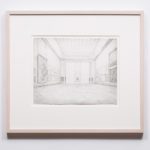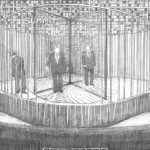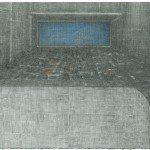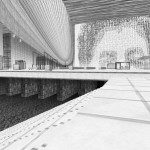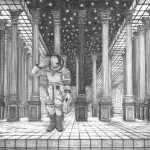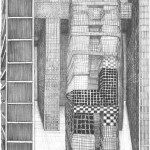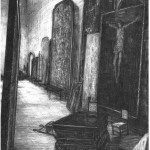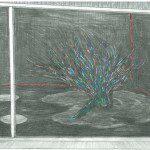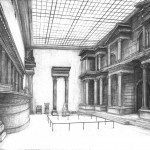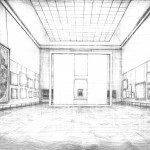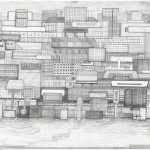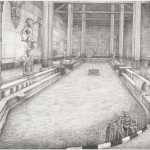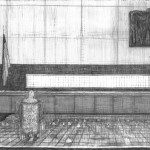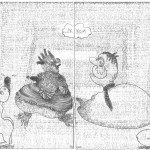Robbie Cornelissen: With Love from Crazy Horse
Text by Natalia Lebedinskaia
Loggia, the title of one of Robbie Cornelissen’s drawings in the exhibition, is a term that refers to a traditionally Italian architectural feature. Often a gallery or a corridor located at ground level (sometimes higher), it is framed by a row of columns on one side that visually open it onto the street. In Cornelissen’s drawing, the viewer presumably stands at the street level looking into the loggia. It is unclear in which direction it opens, as traditionally loggia is accessed from the interior, and the windows, while they open onto the street, do not allow for the passer-by to enter. This is the oscillation of access and boundaries in all of Cornelissen’s works: of letting the viewer into the drawing, of leading them around the passageways and streams, and yet of keeping the interior always slightly out of reach. Aligning perfectly with the qualities of drawing as a medium traditionally used for architectural sketches, doodles, and preparatory drawings, Cornelissen’s practice presents these spaces as akin to Jorge Luis Borges’ labyrinths or MC Escher’s drawings of impossible architectures.
In an introduction to Borges’ Labyrinths (2007), the editor James E. Irby suggests that both Borges and Franz Kafka “share insistence on breaking with the given world and postulating another.” Cornelissen does the same. His drawings and video works insist on continuously breaking with their own architecture and geography, insisting on their autonomy as drawings, as well as the materiality of the worlds they create. They expand beyond the framed surface of the drawing, their vanishing points and details lead the eye to slide and tilt through the empty spaces, rooms, corridors, statues, continuously grounding and destabilizing the viewer. Not even allowing for the basic ground of knowing whether the space is an interior or an exterior. Are we looking at an imagined house? …a government building? …a city? …a stack of boxes or a futuristic apartment block? The space remains out of reach, pivoting between Cornelissen’s stream of consciousness and ours. The drawings, in their overlay and erasure of lines and shading, allow for all these possibilities to coexist, even if in opposition. This is the key to the labyrinth, a suggestion that the structure may go on indefinitely in its inconsistency and its spatial paradox. It continues to become as it is perceived: a manifestation of both individual and collective remembering and imagination, supported through references that point both into the past and into a nostalgic future.


